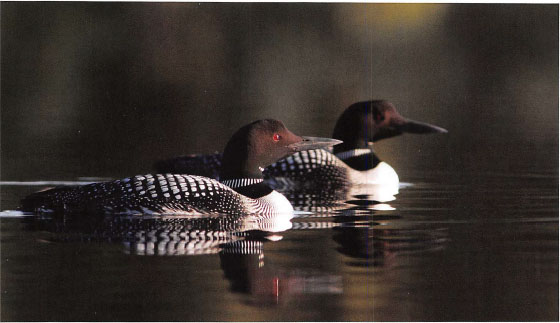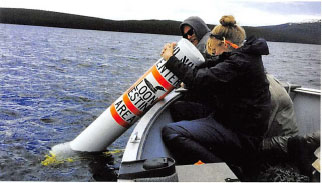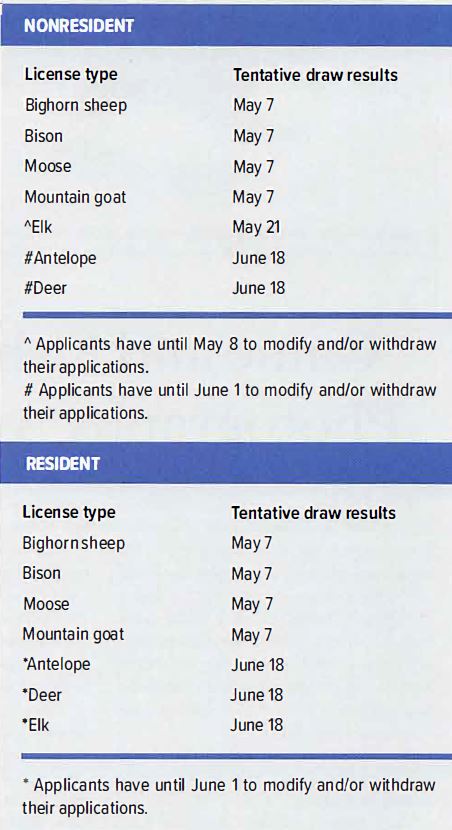CHEYENNE – More loons have been spotted in northwest Wyoming during the last five years, and in unexpected places.

The Wyoming Game and Fish Department listed loons as a Species of Greatest Conservation Need in its 2017 State Wildlife Action Plan. The listing identifies the species as one needing more management attention or chat needs to be studied. Despite better numbers recently, they are far from coming off that list.
“They are the very highest on the bird list,” said Andrea Orabona, Game and Fish nongame bird biologist. “They may never be taken off char list or moved down due to naturally low populations or restricted distribution in the state.”
“The Ricketts Conservation Foundation is the research arm for the study of loon populations in northwest Wyoming. In 2018 and 2019, 22 territorial pairs were found, along with 13 unpaired adults in 2019. In 2015, 16 pairs and 10 unpaired loons were sighted.
“It has been an interesting evolution of the study year to year,” said Vincent Spagnuolo of the Ricketts Conservation Foundation. “We learn more, and as we do more questions arise.”
More loons are being found on lakes in the Wind River Range, where the elevation of some of the lakes exceeds 9,000 feet. Spagnuolo said there was at least one instance of a territorial pair in the Wind Rivers each of the last two years.
“Loons have been studied for decades, bur these loons are utilizing habitats char your typical loon population won’t be found in,” said Spagnuolo, who added a pair of loons were found in 2019 at just over 9,400 feet, which might be a record for documented loon pairs.
More loons are being found on lakes in the Wind River Range, where the elevation of some of the lakes exceeds 9,000 feet.
Finding loons at such locales and elevations is unusual because many of chose lakes have ice on them all or most of the year. That isn’t ideal habitat for loons, which eat fish, and need water for nesting, taking flight and landing.
Previously, loons have been spotted in Yellowstone and Grand Teton national parks, as well as in the Bridger-Teran and Caribou-Targhee national forests.
Finding loons on remote lakes in Wind River Range is one thing; getting co chem and finding out how many lakes they’re on is another.
“We’re bushwhacking up drainages and over ridgelines co ger to these lakes,” Spagnuolo said. “We’re still trying to understand where the birds are, what are their habitat preferences and how they utilize char habitat, and what decision-making goes into where they end up landing and staying. We have to keep an open mind.”
Northwest Wyoming is the southernmost range for common loons in the western United States, and Spagnuolo said the latest counts of pairs and unpaired adults are a conservative estimate. There is optimism the population is growing, but more work lies ahead.
Orabona said geolocators attached to leg bands were placed recently on nine females, bur nine of the IO devices malfunctioned. She added more discussions are being held about placing geolocators on loons again co get added information about where they go in Wyoming and during their winter migration. – Robert Gagliardi, WGFD

Staff members from the Ricketts Conservation Foundation deploy a closure on Yellowstone Lake. Targeted and temporary closures have played a positive factor in the increase in loon numbers in recent years. (Photo by Ricketts Conservation Foundation)
Hunting application deadlines approaching
CHEYENNE – May is a big month for nonresident elk hunters in Wyoming. New 2020 regulations from the Wyoming Game and Fish Department allow nonresident elk applicants until May 8 to modify or withdraw their applications. Draw results will post the third week in May.
Nonresident elk hunters previously faced an issue finalizing their applications far before Game and Fish biologists published tentative season information, including estimated license quotas. With the change, nonresident hunters can withdraw license applications after season information is finalized by the Game and Fish Commission in April.
The tentative draw dates for resident and nonresident hunting licenses in Wyoming for 2020 are:

